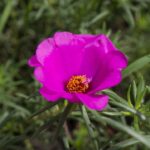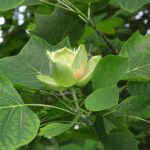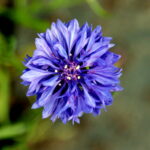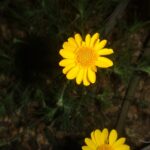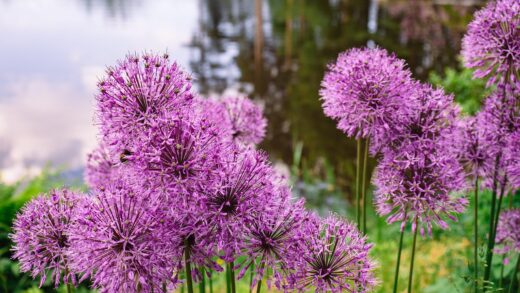The pruning and cutting back of the Abyssinian gladiolus

The topic of pruning as it relates to the Abyssinian gladiolus is often a source of confusion for gardeners, primarily because this plant does not require pruning in the traditional sense, such as shaping a shrub or woody perennial. Instead, the maintenance practices for Gladiolus murielae revolve around timely and strategic cutting back of specific parts of the plant at different stages of its life cycle. These actions, which include deadheading spent blooms and managing the foliage after flowering, are crucial for directing the plant’s energy towards the most important functions: strengthening the corm for the following year and maintaining garden aesthetics. Understanding when and what to cut is key to the long-term health and perennial success of this elegant plant. This guide will clarify the necessary cutting practices, from removing faded flowers to the final cleanup in autumn, ensuring you are supporting, not hindering, your plant’s natural rhythm.
Deadheading for plant energy
The primary form of “pruning” that you will perform on an Abyssinian gladiolus during its growing season is deadheading. This is the simple practice of removing the individual flowers from the spike as they fade and wither. This task serves two important purposes. The most immediate benefit is aesthetic; removing the brown, shriveled flowers keeps the plant looking clean, tidy, and attractive, allowing the beauty of the remaining open flowers to shine without the distraction of decaying blooms. It ensures the flower spike remains an elegant feature in the garden for as long as possible.
The second, and more crucial, reason for deadheading is to redirect the plant’s energy. Once a flower has been pollinated, the plant’s natural objective is to produce seeds. This process of seed development requires a significant amount of energy. By removing the faded flowers before they have a chance to form seed pods, you effectively interrupt this cycle. The energy that would have been invested in making seeds is instead conserved and redirected back down to the corm, the plant’s underground storage organ.
This redirection of energy is vital for the future health and performance of the plant. A well-nourished corm that has stored a maximum amount of energy will be larger, healthier, and better equipped to survive winter storage. It will also have the necessary reserves to produce a strong, vigorous plant with an even more impressive floral display in the following growing season. Deadheading is a simple investment of time that pays significant dividends in the long-term perennial performance of your Abyssinian gladiolus.
The process of deadheading is straightforward. You can either gently pinch off the spent blooms with your fingers or use a small, clean pair of scissors or snips. Remove the individual flower along with its small stem, taking care not to damage any of the remaining unopened buds on the spike. This should be done every few days during the blooming period as the flowers sequentially fade from the bottom of the spike upwards. This small but consistent effort makes a significant difference.
More articles on this topic
Cutting flower stalks after blooming
Once all the individual flowers on a single stalk have bloomed and been removed or have faded, the entire flower stalk can be cut back. There is no benefit to leaving the bare green stalk in place, as it will not produce any more flowers. Cutting it back improves the overall appearance of the plant, leaving just the attractive, sword-like foliage for the remainder of the season. This tidy-up helps to keep the garden looking neat and directs focus to other plants that may be coming into their own.
When cutting back the flower stalk, use a clean, sharp pair of pruners or garden scissors. Cut the stalk down as close to the base of the plant as you can, near where it emerges from the fan of leaves. Be very careful during this process not to damage any of the surrounding foliage. The leaves are the plant’s engine for the rest of the season, and they must be preserved. A clean cut will heal quickly and reduce the risk of any disease entering the plant through a ragged wound.
It is important to distinguish between cutting the flower stalk and cutting the leaves. The stalk is purely for flowering and, once spent, it has completed its purpose for the season. The leaves, however, have a critical ongoing role to play. They will continue to absorb sunlight and photosynthesize for several more weeks or even months into the autumn. This is the period when the plant is working its hardest to build up and charge the new corm for the next year.
Therefore, after you have cut back the bare flower stalk, the primary task is simply to let the foliage be. Allow it to continue growing and gathering energy. This post-flowering period is just as important as the blooming phase for the perennial life cycle of the plant. Resist the urge to tidy up the plant by trimming the leaves at this stage, as this would be detrimental to the plant’s long-term health and its ability to flower well in subsequent years.
More articles on this topic
Managing foliage in the autumn
The management of the foliage in autumn is a critical step that directly impacts the plant’s ability to survive the winter and thrive the following year. After the flowers have faded and the stalks have been cut back, the long, green, strap-like leaves must be left completely intact. They are now the sole energy producers for the plant. Throughout the late summer and early autumn, they will bask in the sun, creating sugars through photosynthesis that are transported down and stored as starches in the new corm developing underground.
You should not cut back the foliage until it has begun to naturally turn yellow and wither. This change in color is the visible sign that the process of senescence has begun and the plant is transferring the last of its energy reserves from the leaves to the corm. This is a natural and essential part of the plant’s preparation for dormancy. Cutting the leaves while they are still green would be akin to removing the batteries from a device while it is still charging, leaving the corm weak and unprepared for the winter.
Once the foliage has turned yellow or brown, typically after the first light frost in autumn, it is time to act. In regions where the corms must be lifted for winter storage, this is the signal that it is time to dig them up. At this point, after lifting the corms from the soil, the dead or dying foliage can be cut back. Trim the stems down to a short stub, about 5-10 centimeters above the top of the corm. This stub can serve as a convenient handle during the curing process.
For those gardening in very mild, frost-free climates where the corms may be left in the ground, the withered foliage can be cut back to the ground level for aesthetic reasons and to maintain garden hygiene. Removing the dead foliage helps to prevent it from harboring pests or fungal spores over the winter. This final cut of the season officially marks the end of the growing cycle and leaves the garden bed tidy and ready for the winter months.
📷 Flickr / Szerző: Stefano / Licence: CC BY-NC-SA 2.0





